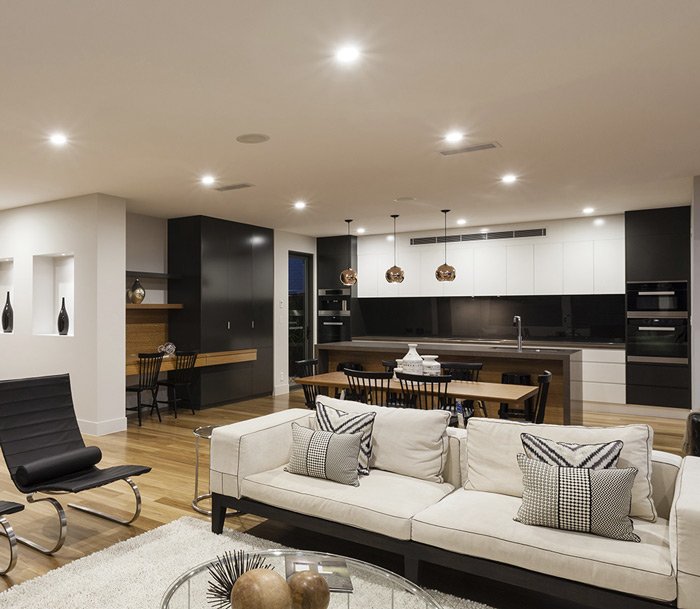Previously reserved for professional use, recessed light is gaining more and more residential use. And it finds use everywhere whether it is living rooms, the entrance hall, stairs and hallways, in the bathroom and elsewhere. Here are some tips for choosing the right recessed lights, and more specifically LED recessed lights.
What color temperature for your LED downlight?
The color temperature of the light emitted by your LED recessed light depends first of all on the room in which you are going to install it and the atmosphere you want to create in each room. Thus, this temperature differs if you install your recessed spotlights in the bedroom, in the living room, or in the bathroom. There are usually three shades of white that you can choose from and the temperature of these colors is measured in Kelvin (K). The higher this number, the cooler the light emitted.
First there is the cool white which is 5000-6500K to choose from for rooms where you need all the lighting possible to see the objects rendered in their natural color. This is the case for the bathroom for example. Then, neutral white (3300 to 5300K) is intended for passageways or rooms where you work such as the office or the kitchen. Finally, warm white (2300-3300K) diffuses a cozy light, promoting more relaxation, recommended for the bedroom or living room.
Electric power and light output of the LED recessed light
Another point not to be overlooked in the choice of your recessed LED light is certainly the energy and luminous efficiency of it. The use you are going to make of the luminaire is still decisive in this case. Then you need more powerful light in the work areas. But since we are talking about LEDs here, the electrical power required to restore this intensity of light is not the same as what you had with the old halogen or incandescent lamps.
To make your choice, you need to take into account what is called the wattage equivalence for your downlight. But to simplify things, keep in mind that the LED consumes on average up to 7 times less electricity than a halogen spotlight for example. And the light intensity of the LED is measured by the number of lumens – which makes it possible to determine its light output, or its ability to illuminate the room according to the electrical energy consumed.
This light output is measured in lumens / watt (lm / W) and the higher this indicator, the more the recessed luminaire illuminates the room for the same power.
What precautions for installing an LED recessed light in a damp room?
This is important if you want your led recessed lighting in a room where they are exposed to splashing water, moisture or water vapor. This is mainly the case for the bathroom and the kitchen where you need to make sure that your LED spotlight is waterproof enough to protect it from risks. This characteristic is measured by the IP protection index, which must be at least IP44 in areas that are not in direct contact with water sources. But it must be IP66 minimum in the direct vicinity of the sink, washbasin, shower or bathtub.
The opening angle of the LED recessed light
Last point to check when choosing your recessed light: the opening angle of it. This determines the mood you will create with your lighting. Indeed, the narrower the angle (between 30 and 60 °), the more the scattered light will be targeted on a particular area or a specific object of the room that you want to highlight. But by choosing several spots with narrow angle, you can set up interesting lighting effects. Use this recessed lighting calculator to find out how many LED recessed light to install. A more open angle (more than 60 °) corresponds to lights suitable as general lighting.





